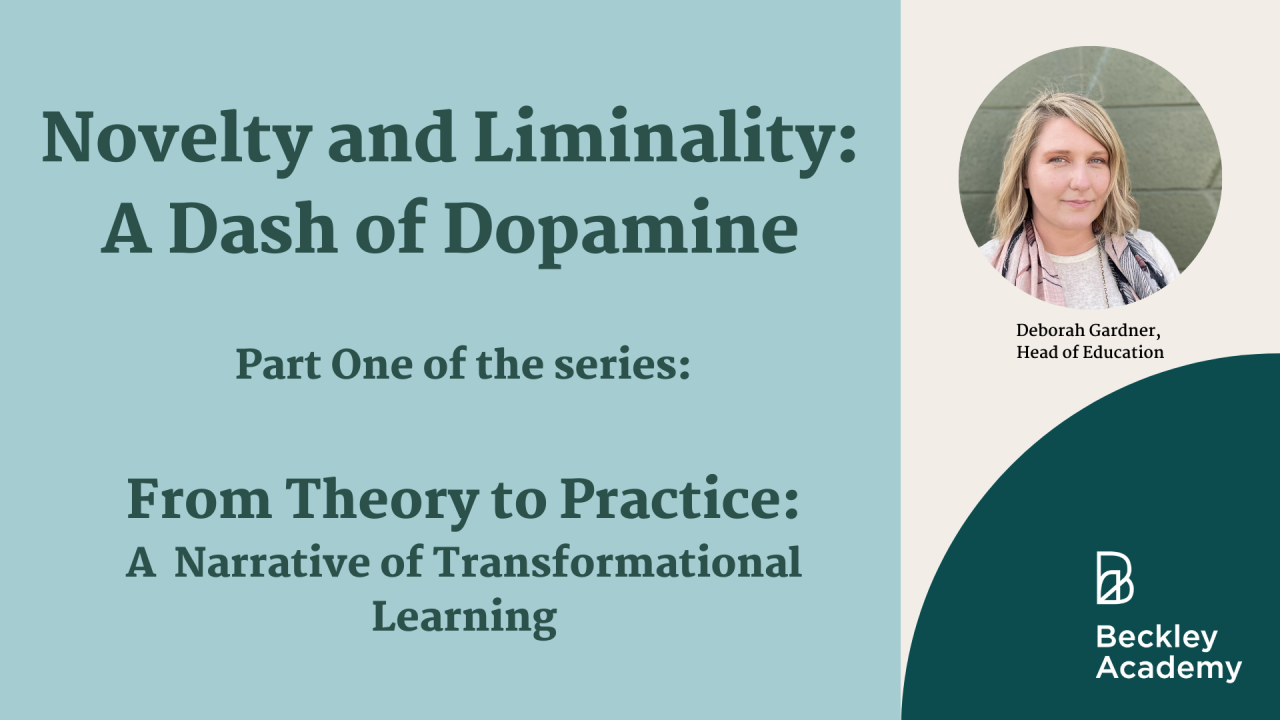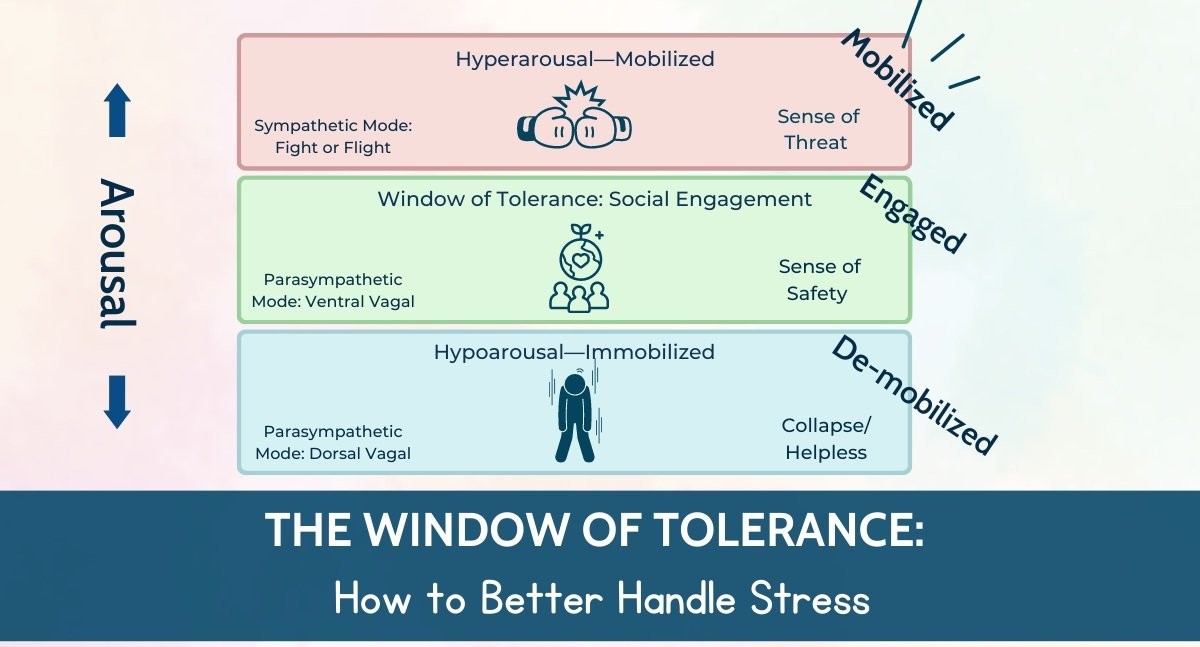
Novel experiences are essential to engaging, relevant, and transformative learning.
Novelty increases levels of dopamine in the brain, which leads to positive feelings and intrinsic motivation to learn (Huberman, 2021). Dopamine strengthens correlations between learning and pleasure (Speranza et al., 2021), making it a crucial component of the learning process.
When learners are challenged and succeed during novel experiences, like learning to ride a bike after practice, it enhances self-efficacy. Pierre Janet termed this an act of triumph, noting that success in the face of challenge leads to joy and empowerment (Ogden, 2019). Think of a time when you were learning a new skill or hobby. It could be playing an instrument, painting, learning a language, or a sport. In the beginning, everything was new, and you were excited and motivated to learn. Every time you achieved a new milestone, you experienced an act of triumph and the associated feelings of happiness, joy, pride, or maybe relief.

Novel experience taps into neuroplasticity. While familiar experiences light up previously learned schemata and neural pathways, often without our awareness (Barrett, 2017), novel experiences create new connections and opportunities for growth and change. When novelty is neither frightening nor overwhelming, it can pique curiosity, leading learners to explore and develop new skills and knowledge. A child exploring the world around them for the first time is a prime example of this phenomenon. The excitement and pleasure of exploring novel experience is easily recognizable by the joy and wonder on their faces. However, childlike wonder is partitioned to the early years of development for most people as novel experiences tend to become far and few between.
When Novelty Wears Off
As we experience more and more of life, we build schemata and neural pathways adding to an increasingly complex information system. For both efficiency and protection, our brains tap into our extensive database of lived experience to make assessments and predictions about the myriad of external stimuli in any given moment.
Drawing from past experiences, our brains allow us to cruise through much of life with reduced effort and attention.
Consider how you can drive to the store without really having to think about how to get there, and rather focus on singing along with your favorite song. The disconnection between the body (driving to the store) and our sense of self (singing) helps us conserve energy and increase feelings of pleasure during routine and potentially boring behaviors.
Outside of our conscious awareness our brains are also scanning for threats. When threats are detected our bodies are primed for action by instinct and past experience, usually before we are even aware of the threat (Barrett, 2017).
We also rely on prior knowledge to learn new and complex information or skills. For example, you may remember learning geometric proofs in high school, which use previously proven “givens” to prove more complex theorems. Similarly, our brains pull up previously learned information in response to the current situation, making additions and edits based on new data.
Using the same example of the car ride, perhaps you decide that you’d like a cup of coffee before you stop at the store. That new coffee shop you want to try is a block north of the store. Because you already know where the store is, you know how to get to the coffee shop.
As we relate new experiences to previous ones, they can become notably less novel and, thereby, less transformative.
Activating prior learning is critical to learning complex information or processes, but it can also get in the way of learning something new when predictive behaviors are no longer helpful, or the information is outdated. We may become agents of our brain’s subconscious processes and potentially miss out on moments of innovation, beauty, or joy in the present moment.
On that drive to that store, perhaps you don’t notice the brilliant sunset. Perhaps you take a more direct route because it’s the one you know, when you might enjoy driving through the park. Maybe you turn off a new song in favor of an old favorite.
While prior learning creates a level of psychological safety that allows us to move through life with a sense of comfort and control, it may also prevent us from gaining new knowledge and developing new skills. In this simple example of driving, there are many opportunities for expansive experience, but patterned behaviors keep us from engaging in them.
Transformative education, then, must bypass outdated information and unhelpful procedurally learned behaviors to tap into novel experience.
Stepping into Liminality
How do we create engaging experiences that promote lifelong learning after the novelty wears off? Liminal spaces, those spaces between that which we know and that which we have yet to discover, are ripe with novel experiences that can open up pathways toward innovation in thinking, feeling, and being.
To engage learners in liminal spaces, education must (1) engage learners in their inner experience, (2) create just enough challenge that doesn’t overwhelm them, and, perhaps most importantly, (3) activate social engagement to create a psychologically safe learning environment.
Join the Beckley Academy Mailing List
Mindful Self-Study
When so much of how we act, feel, and think is influenced by split-second brain functions outside of our conscious awareness (Barrett, 2017), how can we access it? One way to step outside of procedurally learned behaviors, emotions, and thoughts, is by eliciting them for mindful self-study. When we bring our inner experience to light, and explore it with curiosity, we tap into neuroplasticity and opportunity for novel thinking, feeling, and behaving.
The internal landscape is full of wonder.

There are many definitions and techniques of mindfulness, both spiritual and non-secular. Here we mean the development and practice of bringing conscious awareness to the present moment experience, with an emphasis on the building blocks of experience: thoughts, emotions, movements, somatic responses, and five-sense perception (Ogden & Fisher, 2015). When we practice mindfulness and attune to our present moment inner experience, we can tap into elements of our procedurally learned patterns for study.
In education, this meta-process is often correlated solely with cognition, in which learners engage in an internal conversation about their own understanding, relationship to the material, and thinking processes. By expanding the concept of metacognition to also include awareness of the other building blocks of experience (namely emotions and actions), we can study the subtle shifts in our experience that indicate predictive responses, and then practice a different response.
Practice: Mindful Self-Study
Let’s try this out. Remember a recent time you felt mildly annoyed. Maybe you were sitting in traffic, or something made you late for an appointment, or something didn’t go exactly as planned. Try to remember the moment in detail… what sights and sounds do you remember? If there were others there, think about them. And as you remember this time you felt mildly annoyed, notice what happens in your body. You might notice tension in your shoulders, an icky feeling in your stomach, tension in your face or neck… You might notice your breath change – maybe you hold it, maybe it becomes shallow… You may start to feel annoyed, like you were in that moment. Maybe you feel angry or like you just want to get away from the memory… And you might notice thoughts, like, Why does this always happen to me?, or If only I could have…, or, Everyone is working against me…, or, I wish these people would just go away.
If you noticed the elements of your past experience in the present moment, you’ve just time-traveled! In other words, you elicited a state of consciousness from a past experience. If the somatic responses, feelings, and thoughts felt familiar, it’s likely a patterned response to certain stimuli that you’ve encountered before. Even though you probably didn’t consciously choose to feel annoyed when you encountered those stimuli, your brain processed the stimuli and highlighted a neural network that enacted a state of feeling annoyed. But there is a key difference this time around. While feeling annoyed stimulates stress hormones (a recipe for anxiety), mindfulness stimulates neurotransmitters like serotonin and GABA and increases alpha waves responsible for feeling calm, and creative, allowing for increased mental development and higher-level information processing (Krishnakumar et al., 2015). With the positive effects of mindful attention, we can explore potentially challenging content with less likelihood of feeling overwhelmed or stressed.
By providing learners with tools for exploring internal experience and through strategic visualizations, we can help them elicit patterned responses for study and update those patterns with new ways of thinking and feeling.
Just Enough Challenge
Creating just enough challenge is also critical to engaging learners as they explore new ways of thinking and being. It can be scary, off-putting, or downright unpleasant to navigate challenging material, especially when it is counter-intuitive to our preexisting understanding. Too much stress or challenge without sufficient support can lead to negative outcomes. As educators, we must find the balance between threat and support to promote growth (Ozbay et al., 2007).
Challenges affect everyone differently and each person’s ability to sit with challenge is different. To create learning experiences that offer diverse learners just enough challenge, we must understand more about how our systems interpret and respond to challenge.
One helpful conceptualization is the “window of tolerance” model (Siegel, 2020). The window of tolerance is the zone of optimal autonomic nervous system arousal. In this optimal zone the nervous system is regulated, we can be present, engage with others, and access resources (Porges, 2018). When the nervous system is regulated, we can navigate challenges with relative ease and without feeling overwhelmed (Porges, 2018). At the edges of the window of tolerance, with just enough challenge, transformational learning happens. Too much challenge can overwhelm the system into dysregulation, leading to fight, flight, freeze response, or total shutdown (Porges, 2018).

Psychologist and educational theorist Lev Vygotsky called that area just beyond our comfort the Zone of Proximal Development (ZPD) (Shabani et al., 2010). In this liminal space, between that which we know and that which we have yet to learn, lie transformational and life-changing experiences.
Two instructional practices that support just enough challenge are scaffolding and differentiation.
Scaffolding for Self-Efficacy
Educational scaffolding is an educational practice that involves a gradual increase in challenge with a gradual decrease in external support. Scaffolding content can take on many different forms, from breaking up information to reduce the cognitive load, to vertical texts on the same topic that increase in complexity (Schoenbach et al., 2012). To scaffold teaching, we can provide modeling, plentiful examples, in-vivo feedback, and demonstrations at the beginning of a unit, and decrease teaching interventions by providing learners with templates, rubrics, and tools for self-assessment. Scaffolding helps learners maintain regulation when introduced to new concepts and provides learners with co-regulation and support in the beginning. Ultimately, scaffolding allows learners to gain a sense of confidence, and then gradually increases their independence, leading to self-efficacy. With the window of tolerance in mind, scaffolding allows teachers to gauge and adjust instruction so that learners can stay within a healthy zone of challenge.
Differentiation for Accessibility
Scaffolding goes hand in hand with differentiation, another educational practice that supports just enough challenge for diverse learners. Differentiation is the practice of tailoring instruction to meet the needs of individual learners, increasing accessibility to the material, and lessening potential overwhelm. Both content and teaching methods can be differentiated. Differentiated content takes on many forms, such as horizontal texts (texts that are at the same level but offer diverse perspectives or access points) (Schoenbach et al., 2012), or providing learners with choices about what resources they use to learn about a topic. Differentiated instruction might look like offering multiple, authentic assessment methods based on learners’ strengths, or providing instruction in written, audio, and graphic form.
Differentiation removes roadblocks, increases accessibility and relevancy, and meets learners where they are, which allows them to focus on growth.

For learners who have had less-than-ideal experiences in the classroom, self-doubt and feelings of shame can get in the way of transformational learning. Differentiation can increase learner resiliency by empowering them to break down their preconceived notions about their own intelligence, capitalizing on their unique strengths and talents, and increasing self-efficacy and motivation.
Creating just enough challenge is critical to engaging learners in transformational learning experiences. It requires an understanding of how our systems interpret and respond to challenge, and the use of instructional practices like scaffolding and differentiation to provide support and accessibility. By finding the balance between threat and support, we can create a safe and empowering learning environment that promotes growth and transformation in all learners.
Why Relationships Matter
Learners need to feel psychologically safe to traverse the unknown, reach out for connection and support when they need it, and maintain enough vulnerability to explore their inner landscape with curiosity and a non-judgmental attitude.
Human beings are wired for connection. Social engagement, according to Porges, is an evolutionary mechanism for survival – one that garners protection, resources, and belonging (2018). When we feel connected with others, our brains release oxytocin, a neurotransmitter that correlates with feelings of trust, bonding, and a positive sense of self and others. When combined with novel experiences, strong relational bonds increase dopamine, and learners are more likely to experience feelings of belonging and remember the experience in vivid detail (Huberman, 2021).

On the other hand, when learners feel unsafe, unsupported, unseen, or misunderstood, the nervous system shifts to either a state of fight, flight, or freeze, or shutdown, which hinders learning and potentiates harm.
Polyvagal theory is a helpful conceptualization of psychological safety, and when applied in the classroom, allows learners to feel safe, and connected (Porges, 2018). When learners are experiencing social engagement, their nervous systems are energized and able to regulate. As they near the edges of their window of tolerance, learners who are in a safe social environment can often extend beyond it if they feel co-regulation with others (Porges, 2018).
Social engagement can help learners regulate their nervous system in the presence of stressors. Connection with others helps replace threat with challenge and support. For those who have experienced trauma or adverse childhood experiences, creating safety can be aided by trauma-informed interventions.
Sitting with Discomfort
If we think of the ability to sit with discomfort as a critical skill for transformational learning, then we must help learners develop this muscle.
We can view educational practices in terms of how supportive they are to learners’ nervous systems during times of challenge. Social safety, just enough challenge through scaffolding and differentiation, and mindful self-study all prioritize a balance between support and growth. When learners feel a safe sense of belonging, they can explore new and unfamiliar landscapes without feeling overwhelmed. These moments are ripe for questioning reality and stepping into novelty. With curiosity, learners can notice when old patterns arise, and update ways of thinking and being.
In the moment that we step into liminal territory with our learners, we apply ourselves to new learning in an engaging, emerging, and transformative space. In other words, when all these tools and processes come together, it is in liminality where transformational experiences take place.
More About This Series
A former student of mine reached out to me through social media. She wanted to let me know that she decided to pursue a career in social justice law in part because of the experiences she had in my English class over a decade ago. Rather than swell with pride— okay, I did shed a happy tear or two— I started wondering, “What’s the recipe for education that is engaging enough to change lives?”
My educational background in art, literature, and social justice, and my diverse professional experiences in education, first teaching students learning differences, and in the last decade, building courses in psychology and mental health modalities for post-grad learners, have illuminated several theories that, applied skillfully, engage learners, making learning meaningful, and create just the right amount of challenge for diverse learners.
In this five-part newsletter series, we will cover topics of theory and practice related to education and mental health. The series will culminate in a community discussion of our theory of education for psychedelic-assisted therapy at Beckley Academy.
All are welcome! Whether you are a learner, educator, or theorist, we’d love to hold space with you.
References
Barrett, L. F. (2017). How emotions are made: the secret life of the brain. Houghton Mifflin Harcourt.
Huberman, A. (2012). Time Perception & Entrainment by Dopamine, Serotonin & Hormones. Huberman Lab Podcast . Retrieved December 11, 2021, from https://www.youtube.com/watch?v=8IWDAqodDas
Krishnakumar, D., Hamblin, M. R., & Lakshmanan, S. (2015). Meditation and Yoga can Modulate Brain Mechanisms that affect Behavior and Anxiety-A Modern Scientific Perspective. Ancient science, 2(1), 13–19. https://doi.org/10.14259/as.v2i1.171
Ogden, P. (2019). Acts of triumph: An interpretation of Pierre Janet and the role of the body in trauma treatment. In G. Craparo, F. Ortu, & O. van der Hart (Eds.), Rediscovering Pierre Janet (pp. 27-51). Routledge. https://doi.org/10.4324/9780429201875-3
Ogden, P., & Fisher, J. (2015). Sensorimotor psychotherapy: Interventions for trauma and attachment. New York: W.W. Norton & Company.
Ozbay, F., Johnson, D. C., Dimoulas, E., Morgan, C. A., Charney, D., & Southwick, S. (2007). Social support and resilience to stress: from neurobiology to clinical practice. Psychiatry (Edgmont (Pa. : Township)), 4(5), 35–40.
Porges, S. W. (2018). The Pocket Guide to the Polyvagal Theory: The Transformative Power of Feeling Safe (Norton Series on Interpersonal Neurobiology). W. W. Norton & Company.
Schoenbach, R. Greenleaf, C. Murphy, L., Cziko, C. & Hurwitz, L. (2012). Reading for understanding: How reading apprenticeship improves disciplinary learning in secondary and college classrooms.
Shabani, K., Khatib, M., & Ebadi, S. (2010, December). Vygotsky’s zone of proximal development: Instructional implications and teachers’ professional development. English Language Teaching, 3 (4), 237-248. https://files.eric.ed.gov/fulltext/EJ1081990.pdf
Siegel, D. J. (2020). The developing mind: how relationships and the brain interact to shape who we are. The Guilford Press.
Speranza, L., di Porzio, U., Viggiano, D., de Donato, A., & Volpicelli, F. (2021). Dopamine: The Neuromodulator of Long-Term Synaptic Plasticity, Reward and Movement Control. Cells, 10(4), 735. https://doi.org/10.3390/cells10040735


